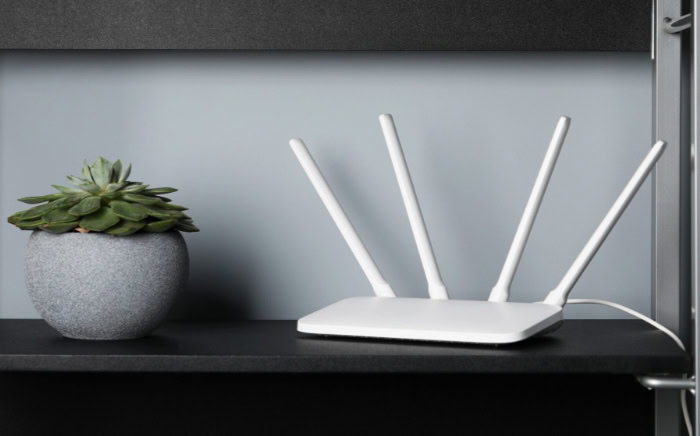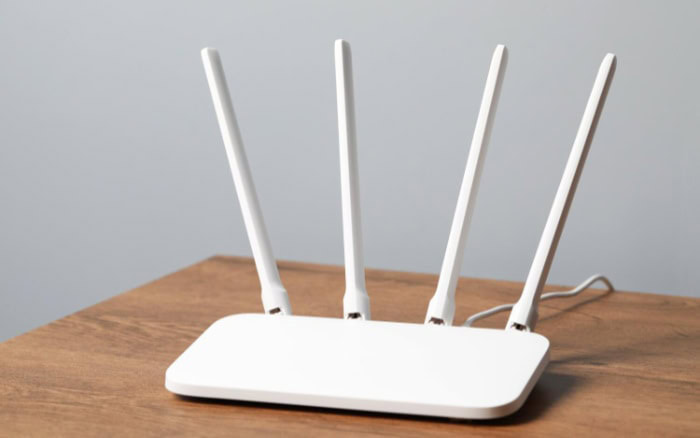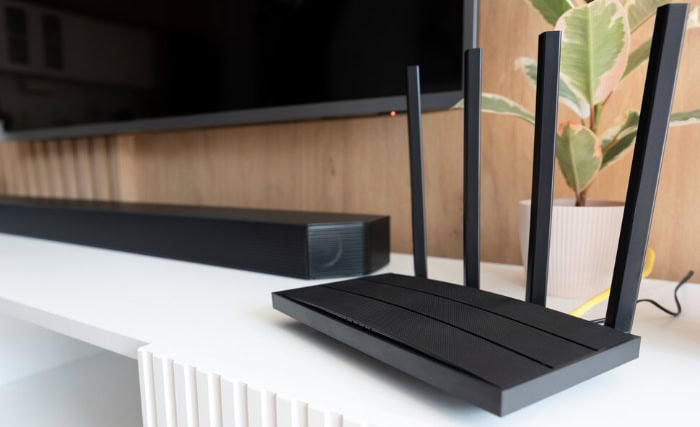WiFi 4 vs. WiFi 5 vs. WiFi 6: What Sets Them Apart

Choosing the right WiFi standard can be the difference between smooth streaming and endless buffering. With every new generation, WiFi evolves to meet our growing appetite for speed, reliability, and security at home and at work.
But with terms like WiFi 4, WiFi 5, and WiFi 6 tossed around, it’s easy to wonder what actually separates these versions and which one will deliver the best performance for your needs. A closer look at their capabilities helps reveal how each standard shapes your online experience, from handling crowded networks to safeguarding your data.
Technical Specifications and Core Features
Every WiFi generation brings new advancements designed to enhance speed, reliability, and user experience. WiFi 4, WiFi 5, and WiFi 6 each introduce upgrades that improve how devices communicate, manage congestion, and use available spectrum.
Speed and Throughput
On paper, each WiFi standard promises faster maximum speeds. WiFi 4 (802.11n) can reach theoretical top speeds of 600 Mbps under ideal conditions.
WiFi 5 (802.11ac) increases this potential dramatically, offering up to 3.5 Gbps. WiFi 6 (802.11ax) pushes the boundaries even further, supporting up to 9.6 Gbps on compatible hardware.
However, actual speeds rarely meet these numbers outside of controlled environments. Factors such as signal interference, distance from the router, and the number of connected devices often result in real-world speeds that are significantly lower.
Even so, jumping from WiFi 4 to WiFi 5 or WiFi 6 usually results in noticeable improvements in everyday use, especially when downloading large files, streaming ultra-high-definition video, or playing fast-paced online games.
Frequency Bands
Frequency bands play a crucial role in how well a WiFi network handles signal congestion and physical obstacles. WiFi 4 supports both the 2.4 GHz and 5 GHz bands, but much of its use historically centered on the 2.4 GHz spectrum.
The 2.4 GHz band offers broader coverage and better penetration through walls, but it is more susceptible to interference from other household devices. WiFi 5 shifted its focus heavily toward the 5 GHz band, which provides higher speeds and suffers from less congestion, albeit with a somewhat shorter range.
WiFi 6 builds on this dual-band approach, optimizing performance on both 2.4 GHz and 5 GHz frequencies. Improved efficiency across both bands allows more devices to connect and communicate without significant slowdowns.
This dual-band advantage makes WiFi 6 well-suited for homes filled with smart devices, where both range and speed are important.
Modulation and Efficiency
Advancements in modulation and other radio technologies play a significant role in boosting both speed and efficiency. WiFi 4 uses up to 64-QAM (Quadrature Amplitude Modulation), which helps pack more data into each transmission.
WiFi 5 raises the bar to 256-QAM, enabling even faster data rates within the same channel width.
WiFi 6 brings an upgrade to 1024-QAM, squeezing even more data into each signal. An even more significant leap comes from the introduction of OFDMA (Orthogonal Frequency Division Multiple Access).
OFDMA allows a router to split a wireless channel into multiple subchannels, enabling simultaneous communication with several devices. As a result, WiFi 6 networks manage bandwidth more efficiently and maintain high performance even as more devices join the network.
Performance in High-Demand Environments

Wireless performance can change dramatically when many devices compete for bandwidth or when several people use applications requiring low latency. WiFi networks handle these challenges in different ways, and each standard brings unique enhancements to tackle congestion, reduce delays, and extend battery life-an area that has grown more important as homes and offices fill up with connected gadgets.
Congestion Management
Handling large numbers of connected devices is where the differences between WiFi generations become quite noticeable. WiFi 4 introduced MIMO (Multiple Input Multiple Output), allowing routers to serve multiple devices more efficiently using several antennas.
WiFi 5 refined this with MU-MIMO (Multi-User MIMO), supporting up to four spatial streams, meaning a router can interact with up to four devices simultaneously. For many households, this offers clear benefits in shared spaces or during peak usage times.
WiFi 6 takes congestion management to another level. It increases MU-MIMO support to eight streams, doubling the number of devices that can receive data at once without waiting their turn.
Another important addition, BSS (Basic Service Set) Color, marks each wireless network with a unique “color” code. This helps devices ignore signals from neighboring networks operating on the same channel-a big advantage in apartment buildings or busy offices where overlapping WiFi is common.
With more efficient use of radio signals, users experience less interference, more stable connections, and smoother overall performance.
Latency Reduction
Reduced latency, or shorter delays in sending and receiving data, makes a world of difference in activities that demand real-time responsiveness. Online gaming, video conferencing, and any situation involving smart home or IoT devices benefit directly from lower latency.
WiFi 5 made strides in this area, but WiFi 6 goes further thanks to technologies like OFDMA, which breaks each channel into smaller sub-channels and allows multiple devices to share the same bandwidth at once.
This simultaneous communication means requests don’t pile up in a queue, and packets get through faster. Gamers notice fewer lags during intense play, video calls are less likely to freeze or stutter, and smart devices respond more quickly to commands.
Even in a house packed with devices, WiFi 6 maintains a responsive feel.
Battery Optimization
Battery life is a top concern for phones, tablets, and wearable devices, all of which crave efficient wireless connections. WiFi 6 introduces a feature called Target Wake Time (TWT), which coordinates when devices wake up to send or receive data and when they can go to sleep.
Instead of staying alert and draining power while waiting for a chance to communicate, devices “sleep” for longer periods and only wake up when scheduled.
Less wasted battery means gadgets last longer between charges, especially for low-power devices like smart sensors and security cameras. For users with lots of connected devices running around the clock, or anyone tired of constantly charging their phones, WiFi 6 brings a very tangible improvement to everyday life.
Compatibility and Upgrade Considerations

Switching to a newer WiFi standard isn’t always as simple as buying a new router. Compatibility, hardware requirements, and up-front investment all play roles in the upgrade process.
It’s important to recognize not just what your current devices can support, but what you actually need to achieve the best possible wireless experience at home or in the workplace.
Backward Compatibility
WiFi standards are designed to maintain backward compatibility to ensure a seamless experience for users with a mix of old and new devices. For example, a WiFi 5 router can still connect to devices that only support WiFi 4, and a WiFi 6 router will communicate with WiFi 5 and WiFi 4 clients.
However, the speed and features drop to the lowest supported standard during these connections. While upgrading your router often improves reliability and may extend coverage, the full benefits of a new standard like WiFi 6 only shine when both the router and your devices support it.
In households or offices with a wide range of devices, this compatibility reduces friction but means some older laptops, tablets, and phones may not be able to take advantage of enhancements such as higher speeds or advanced congestion management.
Hardware Requirements
Adopting WiFi 6 requires more than just new software or a simple setting change. Routers must include updated chipsets and antennas to support WiFi 6 features, which are labeled with “AX” in their model numbers, such as AX1800 or AX6000.
Devices also need compatible wireless adapters or built-in WiFi 6 radios, which are becoming more common in newer smartphones, laptops, and smart home equipment. Simply put, to unlock all the advantages of WiFi 6, both the router and the connecting devices must support the standard.
For those with older computers or gadgets, USB WiFi 6 adapters offer a possible upgrade path for select devices, but not everything can be easily retrofitted.
Cost vs. Benefit
Network upgrades always come with a price tag, and the return on investment can vary depending on your specific needs. For home users, WiFi 5 may remain sufficient if internet speeds are modest and device counts are low.
However, households with many users streaming, gaming, and connecting smart home devices will notice tangible benefits in stability and speed after moving to WiFi 6. For enterprises and educational institutions, the enhanced capacity, lower latency, and battery-saving features can justify the upfront investment, especially in busy environments like offices, schools, or public venues.
As more devices support newer standards, the long-term value of upgrading increases, often resulting in less frustration, fewer dropped connections, and better security. Costs continue to decrease over time, making adoption more accessible for a broader range of users.
Security Enhancements Across Generations

Security standards for wireless networks have grown more advanced with each new WiFi generation. As our dependence on WiFi has spread, so has the need for better protection against eavesdropping, unauthorized access, and cyber threats.
The development of smarter encryption methods and privacy features reflects a growing demand for peace of mind, especially as more sensitive data travels over the air.
Encryption Protocols
The safety of a WiFi network depends heavily on the strength of its encryption protocol. WiFi 4 and WiFi 5 both rely on WPA2 (Wi-Fi Protected Access 2), which was a significant improvement over earlier security methods but is now showing its age.
WPA2 uses robust encryption, yet vulnerabilities have surfaced over time, including susceptibility to brute-force attacks where hackers try countless password combinations in hopes of gaining network access.
WiFi 6 introduces WPA3 as the default security protocol. WPA3 makes brute-force attacks significantly more difficult by enforcing stronger password protections and individualized data encryption.
Even if someone manages to intercept your wireless traffic, decrypting it without your credentials becomes nearly impossible. Upgrading to WiFi 6 does not only mean faster speeds or better efficiency; it also means devices and data are better protected against current threats.
Privacy Improvements
Privacy is especially important when connecting to public WiFi networks in places like airports, cafes, or hotels. Traditionally, public networks offered minimal protection, making it relatively easy for attackers to snoop on user activity.
WiFi 6 addresses this issue with improved encryption methods that extend privacy to every session, even on open WiFi.
Each user’s connection receives individualized encryption, which isolates their traffic from others on the same network. Sensitive activities, such as online banking or private chats, are better shielded from prying eyes.
These advancements make connecting to public networks a safer experience and represent a meaningful step forward for anyone who values their privacy on the move.
Use Case Recommendations

Choosing the right WiFi standard often depends on the specific needs of the network environment and the types of activities that will be performed. Device compatibility, network speed, reliability, and the number of users all influence which WiFi version delivers the best experience.
Different scenarios, from home entertainment to enterprise connectivity, benefit uniquely from the strengths of WiFi 4, WiFi 5, and WiFi 6.
Home Networks
For most households, WiFi 5 offers a solid balance of speed and stability for typical streaming, browsing, and gaming demands. WiFi 5 routers handle multiple HD streams and online gaming sessions reliably, especially for families with a moderate number of devices.
Those with many smart home devices, multiple users streaming 4K content, or children gaming online may see notable improvements from WiFi 6. WiFi 6 introduces smarter traffic handling and better performance in dense device environments, reducing lag and buffering even as more gadgets connect.
Smart speakers, cameras, and thermostats can operate without interfering with high-bandwidth activities like 4K streaming or cloud gaming.
Enterprise Applications
Large offices, universities, and event venues require robust WiFi solutions designed to support hundreds or even thousands of simultaneous users. WiFi 6 stands out in these high-density settings by allowing many devices to connect and operate efficiently without slowing each other down.
Features such as OFDMA, more MU-MIMO streams, and BSS Color provide smoother connections, less interference, and better overall user experience. For organizations where employees, students, or visitors rely on seamless wireless access for work, learning, and collaboration, adopting WiFi 6 helps maintain speed and security even in packed spaces.
IT departments also benefit from improved manageability and reduced support requests related to wireless congestion.
Bandwidth-Intensive Tasks
Users demanding the fastest and most reliable wireless performance, particularly for activities like 4K or 8K video streaming, virtual reality, and large file transfers, benefit most from WiFi 6. The increased throughput, reduced latency, and superior efficiency translate into noticeably smoother experiences during data-heavy activities, even with many devices on the network.
Video creators, gamers, and anyone frequently transferring large files or participating in real-time collaboration will appreciate the boost in speed and stability. WiFi 5 still performs well for most high-bandwidth activities, but WiFi 6 takes reliability and responsiveness to a new level for those who need the absolute best.
Conclusion
WiFi technology has come a long way, with each new standard bringing valuable upgrades in speed, efficiency, and security. WiFi 4 paved the way for broad wireless adoption, WiFi 5 delivered a major boost in speed and reliability for modern streaming and gaming, while WiFi 6 tackles the challenges of device-packed homes and busy workplaces with smarter congestion management, reduced latency, and better battery life.
Choosing the right WiFi version comes down to your environment and expectations. Households with simple needs or older devices may find WiFi 5 perfectly adequate, while homes filled with smart gadgets or users demanding lag-free streaming and gaming will appreciate the advanced capabilities of WiFi 6.
For organizations, especially those supporting many simultaneous users, WiFi 6 stands out for its ability to keep connections fast and stable even in crowded spaces. Security improvements in WiFi 6 also make it a compelling choice for anyone concerned about protecting data on home or public networks.
Before upgrading, assess your current devices, the number of users, typical online activities, and long-term needs. Investing in the latest standard may cost more up front, but it ensures your network is ready for the growing demands of tomorrow’s connected world.
